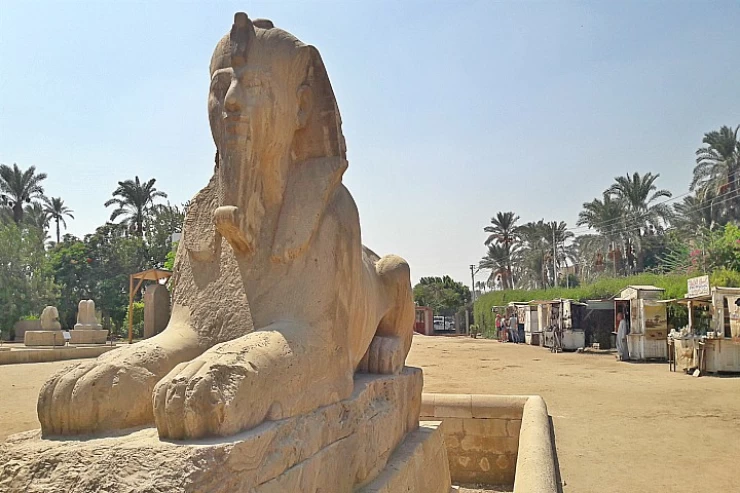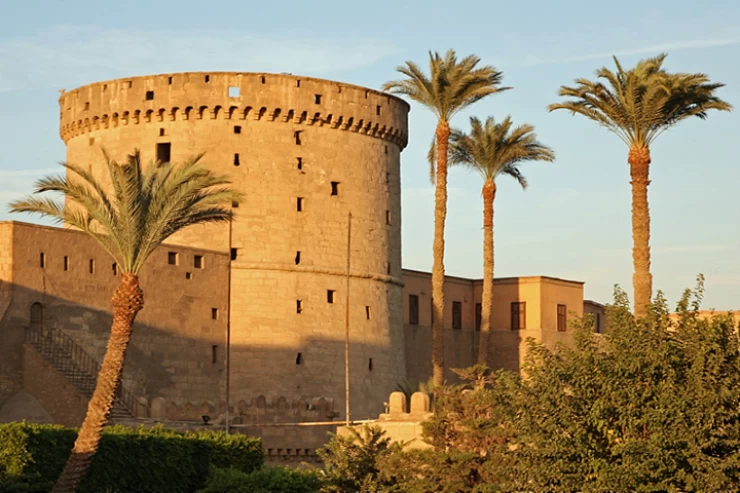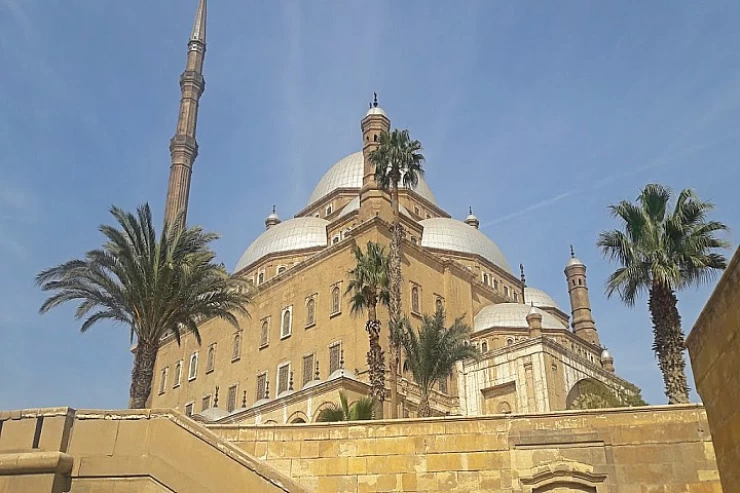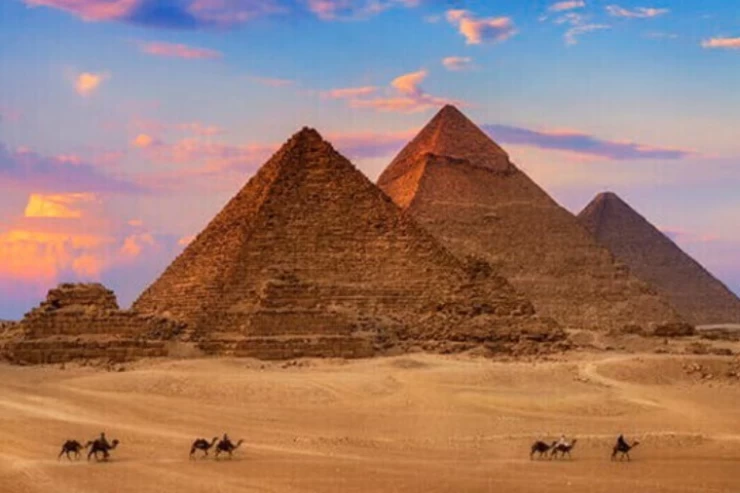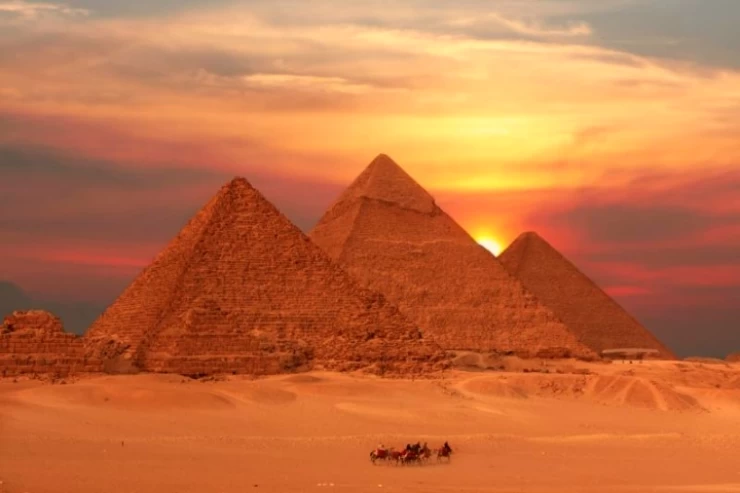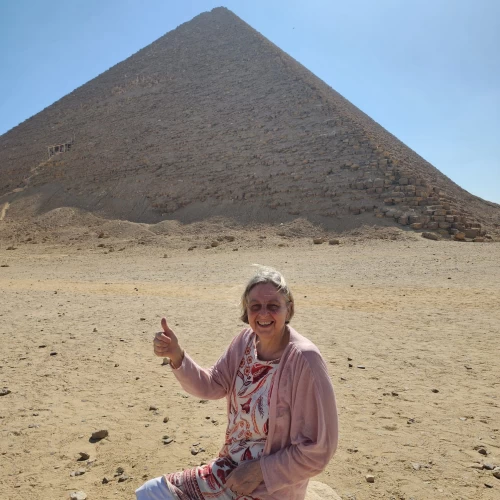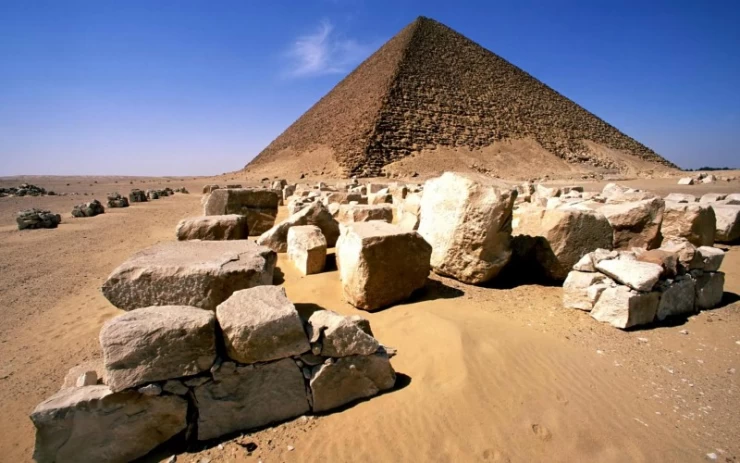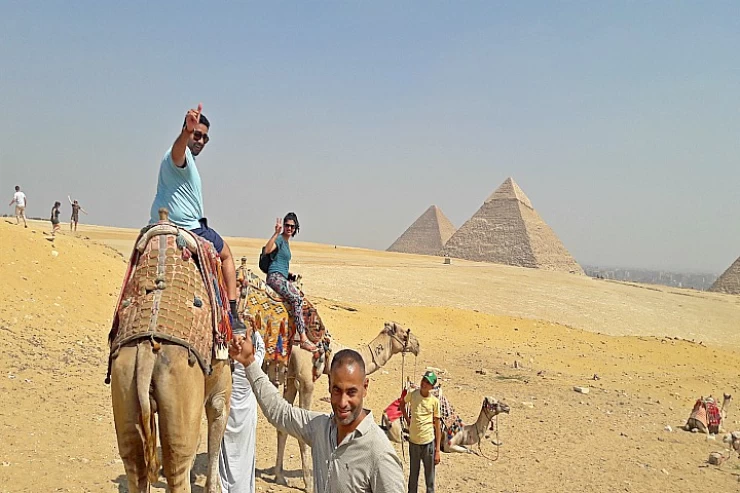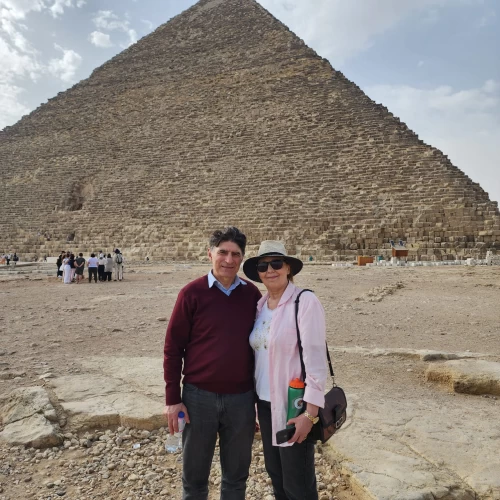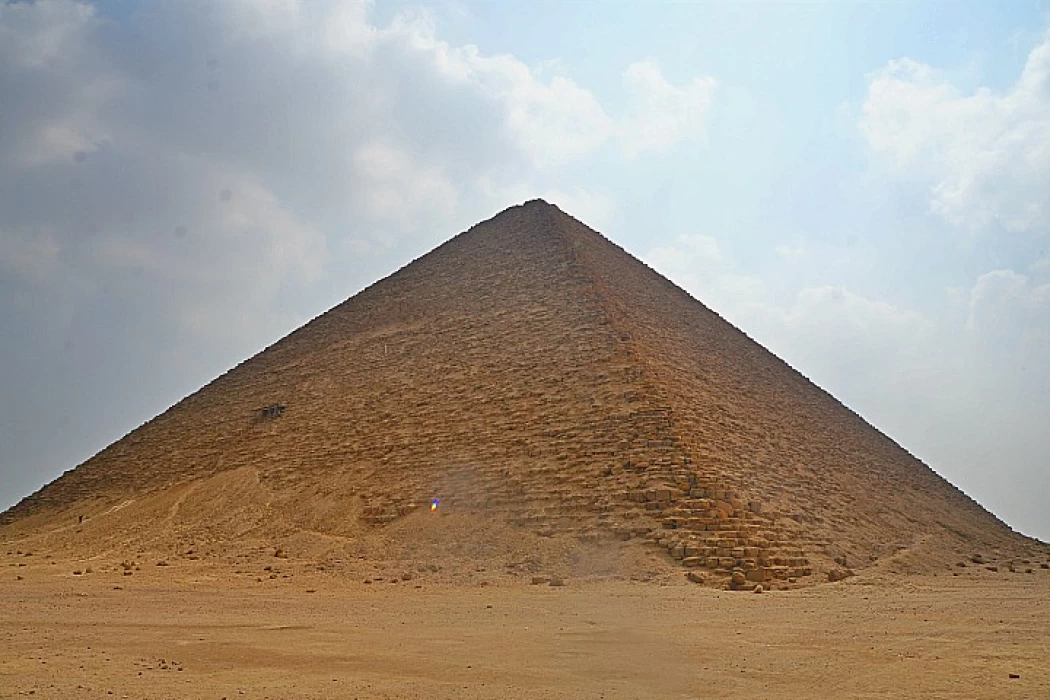
The Fourth Dynasty of Ancient Egypt History
The Fourth Dynasty of Ancient Egypt History
However, Snefru himself was later idolized in the turquoise mines of Sinai. The Stone of Palermo keeps records of six of his twenty-four and more years of reign; besides the construction of various ships, portals, and statues for his palace, two military campaigns are remembered of him, one against a Nubian territory where he is said to have captured seven thousand prisoners and two hundred thousand heads of cattle, the other against the Libyans from whom he brought back a rich, albeit minor, booty.
Even more interesting is the arrival from Byblos, a city at the foot of Lebanon, of forty ships loaded with cedarwood. But all these enterprises pale in front of the monuments erected in Dahshur, four miles south of Saqqara.
The Bent Pyramid and the Red Pyramid. Both exceed 94 meters in height and the interior has another point in common, that is, an impressive burial chamber with a very high ceiling. Some archaeologists also attribute the pyramid of Meidum to him, while others attribute it to Huni, although it may have been Snefru to finish it. Snefru left an ideal, generous, and good image of the monarch.
King Cheops:
The name of Cheope, in the plan handed down from Herodotus, belongs to the historical background of the whole world. His funeral monument, the great pyramid of Giza, was considered one of the seven wonders of the ancient world and is still at the center of countless measurements, conditions, and the most varied opinions.
Little is known of the life of the builder of the great pyramid, except for some material evidence of his absolute power. The cartouche that contains the name of Khufu (the real name of Cheope) has been found in various stone quarries, in the tombs of the family and servants, and in some inscriptions of a later date.
Djedefra succeeded his father to the throne of Egypt before Chephren came and built another not less great pyramid in the same necropolis, his funerary complex is the only complete compared to other pyramid complexes of his father and his son Mycerinus who succeeded him. The great sphinx is a good example of the power of this great ruler has got, also the only existing Valley Temple is within his complex where his body passed through the mummification process.
The last king of the 4th dynasty was Shepseskaf. After Mycerinus, the wealth of the dynasty quickly declined. The third pyramid was quickly finished and furnished inside by Shepseskaf, although the royal list of Saqqara adds three more whose names have been lost making it impossible the comparison with those given by Manetho.
Kings of the 4th dynasty: 2575–2465 B.C.
- Snefru 2575–2551 B.C.
- Khufu 2551–2528 B.C.
- Djedefre 2528–2520 B.C.
- Khafre 2520–2494 B.C.
- Nebka II 2494–2490 B.C.
- Menkaure 2490–2472 B.C.
- Shepseskaf 2472–2467 B.C.
- Thamphthis 2467–2465 B.C.
Latest Articles
Admin
Seabourn Sojourn Cruise Stops in Safaga Port
The Seabourn Sojourn, the flagship vessel of Seabourn Cruise Line's ultra-luxury fleet, was built in 2008 at the T. Mariotti shipyard in Genoa, Italy. Measuring 198 metres, it can accommodate up to 450 guests in its 225 spacious all-suite staterooms.
Admin
Norwegian Sky Cruise Stops in Safaga Port
Norwegian Cruise Line operates a cruise ship called the Norwegian Sky. It was constructed in 1999 and can accommodate 2,004 passengers in addition to 878 crew members. The ship has several dining establishments, lounges and bars, a spa and fitness center, swimming pools, and a number of entertainment areas.
Admin
Explora II Cruise Stops in Safaga Port
Explora II, the second vessel in the Explora Journeys fleet, sets sail in 2024 to redefine luxury cruising. With 461 ocean-front suites, 9 culinary experiences, and 4 pools, this haven of sophistication and sustainability promises an unforgettable "Ocean State of Mind" journey to inspiring destinations.
Admin
Mein Schiff 6 Cruise Stops in Safaga Port
The Mein Schiff 6 is the latest cruise ship in the renowned TUI Cruises fleet, offering passengers a luxurious and sophisticated cruise experience. At 315 metres long, this floating resort features a range of dining options, entertainment, and recreational facilities, including a spa, fitness centre, and sports amenities.
Admin
Mein Schiff 4 Cruise Stops in Safaga Port
When the Mein Schiff 4 cruise ship docks in Safaga, Egypt, passengers are granted access to a realm of ancient wonders. Aboard this state-of-the-art vessel, guests can embark on meticulously curated shore excursions that showcase the region's most iconic landmarks, including the Giza Pyramids, the enigmatic Sphinx, and the remarkable tombs and temples of the Valley of the Kings in Luxor.
Admin
MS Europa Cruise Stops in Safaga Port
The Silver Moon, Silversea's latest flagship, is a luxury cruise ship that offers an exceptional travel experience for Venezuelans exploring Egypt. With a capacity of 596 guests and an impressive 40,700 gross tonnes, the Silver Moon maintains the small-ship intimacy and spacious all-suite accommodations that are the hallmarks of the Silversea brand.







